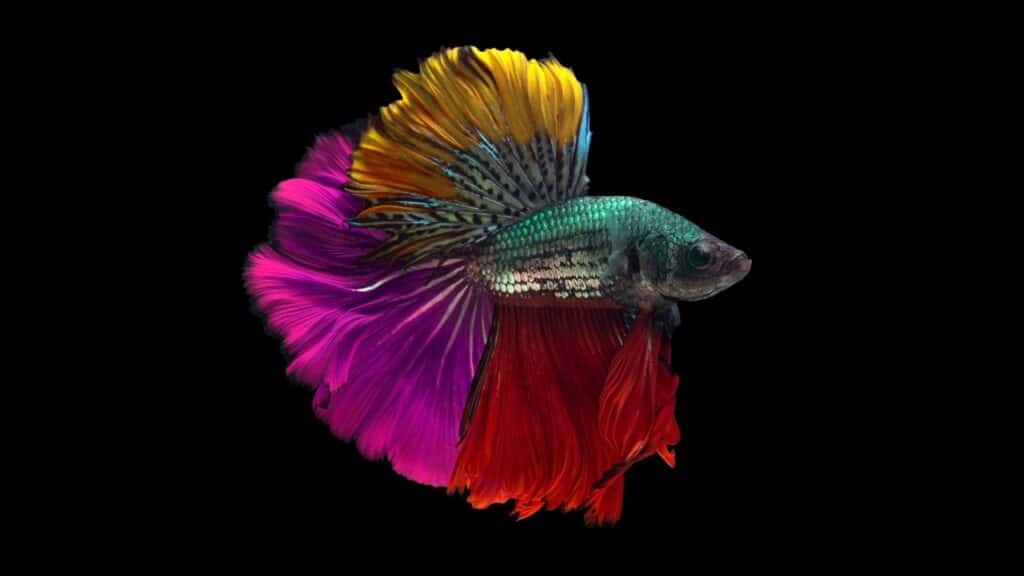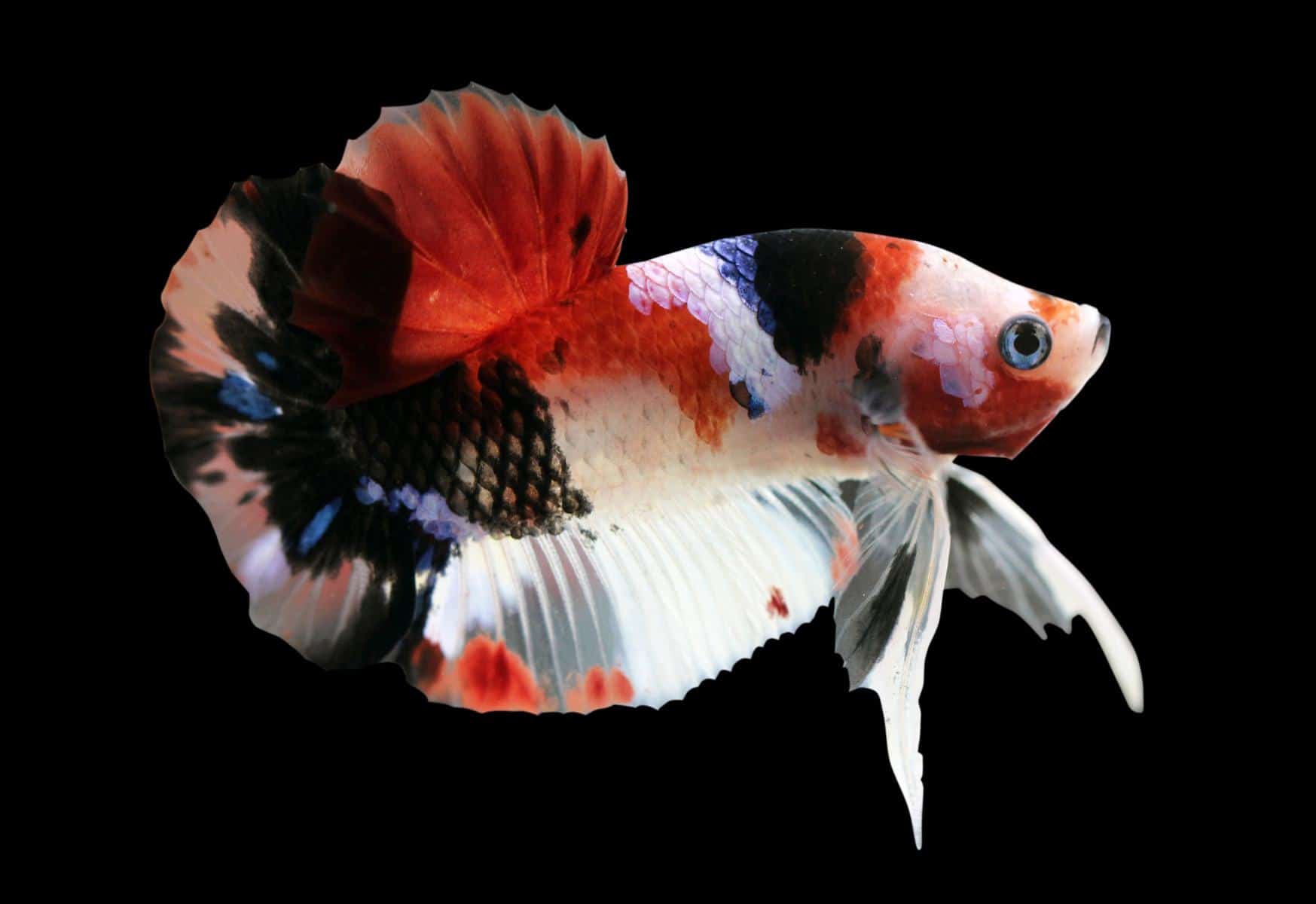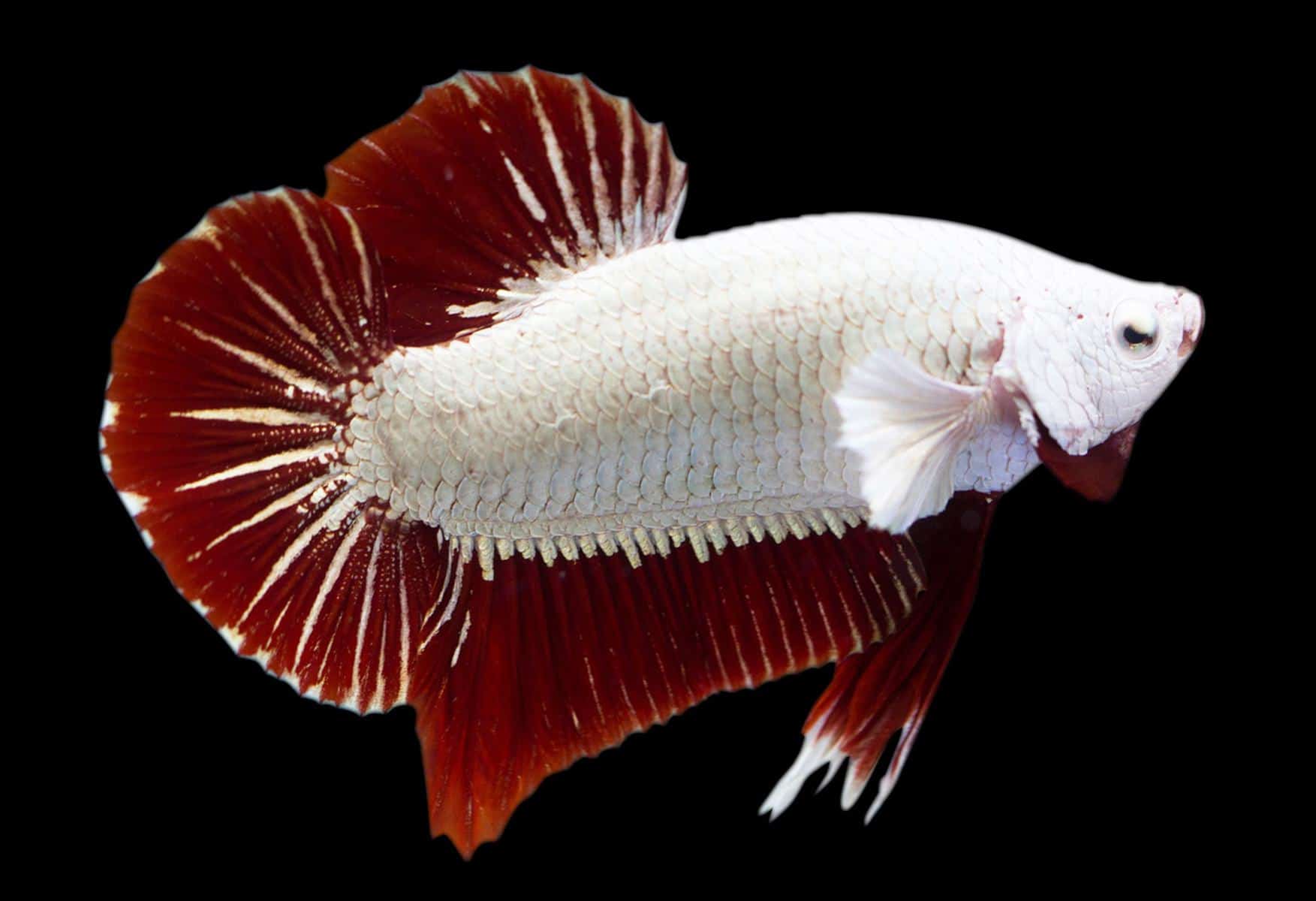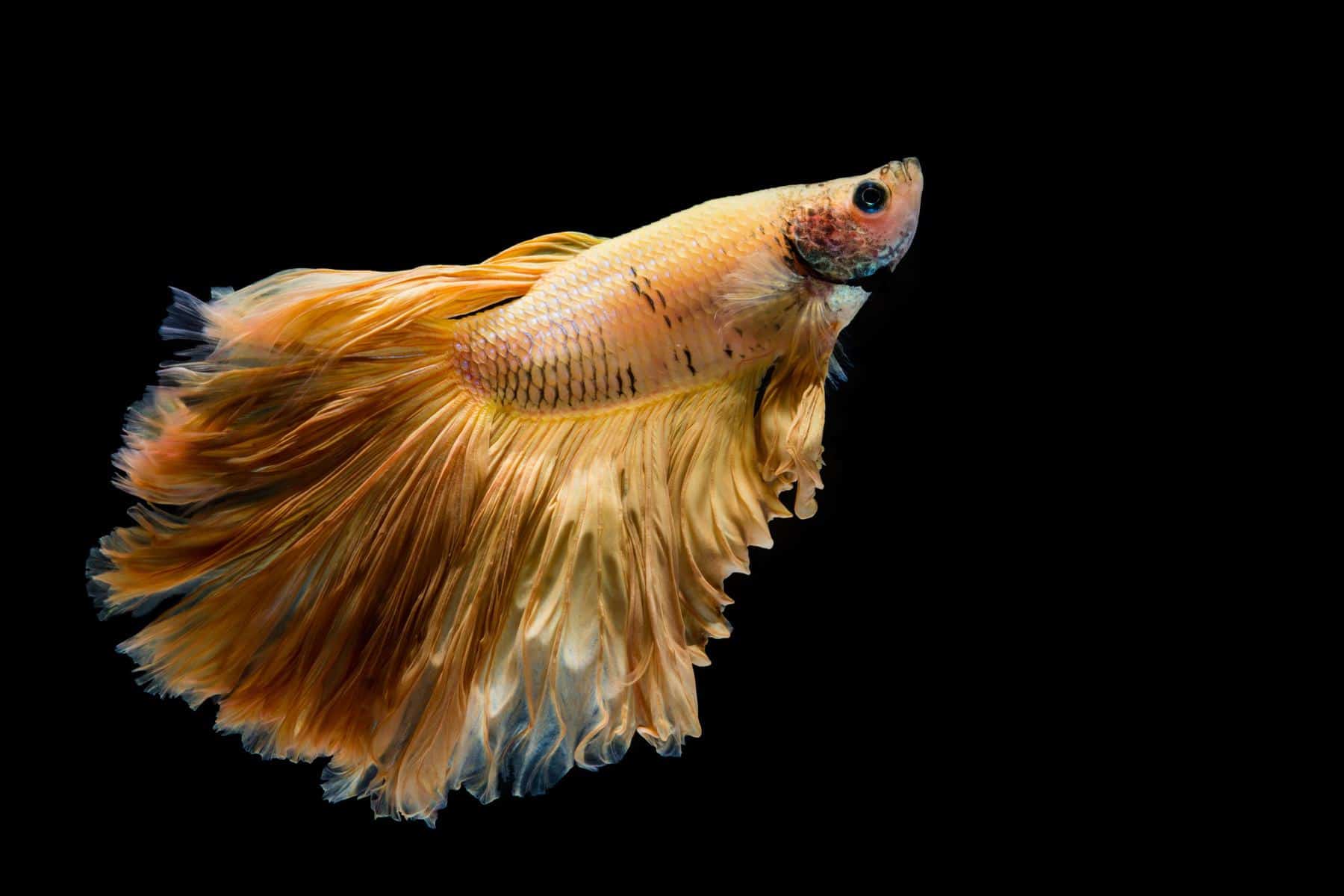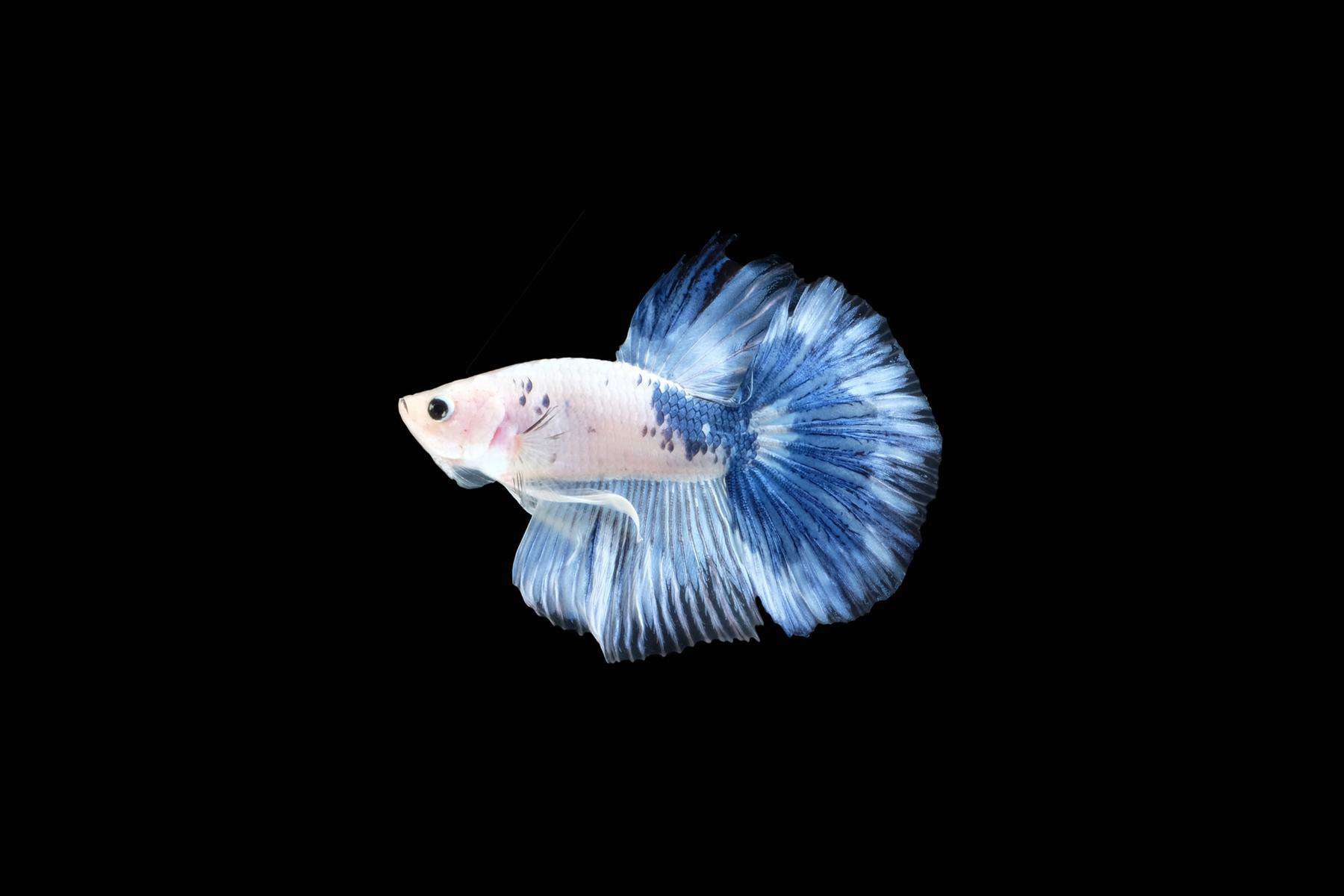Sharing is caring!
Betta fish are some of the most colorful and unique fish available in the freshwater aquarium hobby. But what causes these patterns and how have they changed from their wild ancestors?
There is a lot of science that goes into breeding betta fish, specifically genetics. Most hobbyists don’t question the beautiful and vibrant colors of their fish, but if you’re left wondering how they came to be, then the abundance of information can be quite overwhelming; that’s why we’re breaking it down for you.
Keep reading to find out the simplest ways to tell betta fish colors and patterns apart, how bettas came to have these colors, and which color variations of bettas are considered the rarest and most valuable.
About Betta Fish Colors
In the aquarium
How betta fish came to have their colors today can be answered with several hundred years of selective breeding. Betta fish breeding has become a contest of beauty and elegance, sometimes at the expense of the overall health of the fish.
The range of colors you see on your betta fish is the result of four different layers, the yellow layer (bottom layer), black layer, red layer, and iridescent layer (top layer). Within each layer are different dominant and recessive genes that determine the expressed colors your betta fish will have.
For a deeper understanding of betta fish pigmentation and genetics, check out our betta fish color guide here.
What do betta fish look like in the wild?
Wild betta fish look much different than the store-bought ones we are used to seeing in fish tanks. For the most part, betta fish blend into the natural greys and browns of their environments and have a much duller color variety.
The main purpose of betta fish being so colorful is for breeding; brighter colors on males usually indicate that the fish is healthy and strong to a female fish. This means that during breeding periods, wild bettas intensify in color to attract the best mates.
While captive-bred betta fish might still intensify in color during breeding periods, these wild color variations have been bred out to be intense all the time for the most part.
How did betta fish become so diverse?
Not only have the colors and patterns of these fish been bred to be the best that they can be, but body shapes and tail types have also been crafted over the years.
Betta breeding comes down to the science of figuring out dominant and recessive genes. In a practice largely known as selective breeding, breeders can pick the best fish out of a hundred and continue to breed them for their best traits.
Unfortunately, this has also been linked to deformities and the occasional genetic mutation. Some fin types, like rosetail bettas, might have difficulty swimming, and their overall quality of life is diminished. However, selective breeding has led to some of our most beautiful betta fish types and has also helped form immunity against some pathogens.
Is it normal for betta fish to change colors?
Yes and no. The answer to this question depends on the type of betta fish you have. Marble betta fish, for example, have special genes that make them change colors daily.
However, if you don’t have a marble variation and your fish starts to lose the intensity of its colors or even starts to develop stress stripes, then something is most likely wrong with the water parameters in your tank.
Common Betta Fish Colors and Patterns
You might be interested to know the exact name and origin of your betta fish’s color. This is an inclusive guide to some of the most common colors and patterns you’re likely to come across in the betta fish hobby.
Black
There are a few types of black betta fish you will come across: black melano, black lace, black orchid, black devil, black ice, and copper-based black.
To read even more in-depth explanations to these different colors, make sure to check out our guide to black betta fish colors here.
Black melano
With black melano betta fish, the breeder’s goal is to achieve a true pitch-black coloring.
The black melano is a result of a mutated gene resulting in melanism, a term for over-developed melanin. While this is most desirable, many black melanos will have tints of blue and steel on their bodies and even fins.
These imperfections are due to the melano mutated gene being recessive. In addition, most black melano female betta fish are infertile. This means that it is usually easiest to breed with other colors that might be carrying the recessive black melano gene.
One of the most common breeding pairs is with blue females, especially those with steel coloration. Because of this, though, many of the offspring show signs of iridescence, which is not desirable. When purchasing a black melano, look for the betta with the deepest black coloration and the least iridescence.
Black lace
The black lace betta fish is nowhere near as dark as the black melano and usually has a fair amount of iridescence on the body and fins. Though an attractive pattern in bettas, this type of black is much less desirable than the true black melano.
The ends of the fins are clear or cellophane, which can look like lace and gives them their name; this characteristic is a result of marble breedings.
Like black melano betta fish, the black lace gene is recessive. However, many of the females remain fertile, which can make breeding these fish with each other much easier.
Black orchid, black devil, black ice
Black orchids almost always derive from marble variants and can occur in most fin types as well. This fish’s primary color is dark black, but it has streaks of steel blue in the fins that typically form a contrast that is almost like a butterfly’s pattern.
Black orchids have large amounts of steel iridescence across their fins and body and can sometimes develop a red wash as a result of the marble trait.
This red color change has led to an even more specific black betta called the black devil. These fish present as a marble-type black color with spots of red in their fins rather than iridescence. Black devil bettas do not breed true, so breeding one of these beautiful fish is left up to luck.
The black ice betta is another variety of black that derives from and appears in marble spawns. The black ice varies in intensity and has a lot of iridescence present in its body and fins.
The iridescence in black ice betta fish may be either green, royal, or steel. Over time, selective breeding has increased the percentage of black ice offspring that come from black ice spawnings, although this variety still does not breed true.
Copper-based black
Copper breeding gets interesting with black genes. This is the result of when a copper-based betta fish is crossed with a fish having one of the previously mentioned black genes.
Most offspring are seen to have melano coloring with heavy copper iridescence, but without the blue or steel iridescent scales that are typically seen with the melano gene. Interestingly, some outliers were entirely metallic green.
However, breeders were able to eventually manipulate this line to intensify the black coloration while keeping fish free from blue and steel occurrences; this also led to fertile females with black genes that could greatly simplify the process.
Still, these fish do not beat true black melano betta fish, as they have too much copper, though breeders might perfect this equation one day.
Red
Like black colorations, reds are pretty complex, too, and have been bred by breeders and aquarium hobbyists for the most desired traits.
While there is a regular red variety that lacks iridescence and has uniformly colored body scales, you’re very likely to come across the other reds as well. In addition to regular red, there are three other red betta variations: extended red, reduced red, and non-red.
Extended red
Extended red occurs when the pigment has increased in density and distribution, creating a deep and solid color. The extended red mutation is the dominant gene in relation to the one for normal red color.
There should be little to no iridescence or black scaling with extended reds. However, most extended reds do have some hints of iridescence due to breeders crossing with other tail shapes.
Reduced red
Reduced red bettas should have a dark-colored body and red only on their fins.
Reduced red bettas don’t seem to be very popular, and their genetics aren’t as thoroughly understood as others. However, we do know this gene is dominant over all red genes besides extended red and is thought to work similarly to the marble gene.
Non-red
Non-red is a double recessive gene and will not show any true red pigment. Instead, this mutation has led to two varieties: yellow and orange.
Yellow non-red betta fish are varying degrees of yellow; it should be clear that there is no singular gene that causes a betta fish to be yellow. Orange non-red betta fish, on the other hand, are newer than yellow ones and tend to wash out over time. One of the most popular variants right now is the orange dalmatian.
To keep their melon colors, some breeders cross orange non-reds with darker colorations. However, this can lead to iridescence and black scaling.
Blue
Steel blue, royal blue, green/turquoise
There are three main blues you might see in betta varieties: steel blue, royal blue, and green (sometimes referred to as turquoise). These colors are found on the top layer in the iridescent layer.
Steel blue betta fish are a lighter blue with a greyish appearance. Royal blue bettas are the darkest blues and can sometimes be mistaken for purple. Green bettas, or turquoise bettas, are a silvery mix between blue and green; this is a common color among wild populations.
Clear/cellophane
Clear or cellophane fish are nearly see-through. They have translucent skin that allows you to see some of their internal organs in the right light.
This color is usually achieved through the marble genes and differs from albinism.
Opaque
Opaque betta fish might look like a white betta, but there is some interesting genetics happening behind this betta fish variation.
Opaque is not a color. Instead, it is a trait that causes the fish to have white powdery scaling. Opaque betta fish can either be steel blue, green, or blue opaque. Steel blue results in the whitest appearance while green and blue will have only hints of those respective colors.
These fish can also be the result of a marble cross.
Albino
Albinism is incredibly rare but not completely unheard of in betta fish, though some hobbyists might disagree.
Like any animal, albinism disrupts melanin production which causes little to no pigment. As a result, albino betta fish have nearly translucent bodies and fins.
A true albino will have red or pink eyes; if your fish has black eyes, then it may be clear (cellophane) or white. Oftentimes, albinism comes with other problems, and these fish do not survive for long.
Marble
Marble genes are highly unpredictable and subject to change at any given point. The first marble bettas were black and white, but now they can be seen in almost every color.
The marble gene is known as a jumping gene or a transposon. This means segments of DNA can move to other sections of the genome, resulting in a change of color expression.
An ideal marble betta fish should be about 50-50 light and dark and be present on both the body and the fins. The most desirable marbles will have a stark contrast between their light and dark colors, so yellow marbles lack show quality.
Once the marble gene has been introduced into a line of bettas, it can be near impossible to remove it from the lineage.
Koi
The Koi betta fish is a type of marble betta with more than two colors present and can resemble koi fish in garden ponds. More specifically, these fish usually have a cellophane body with red and black spots of color.
Grizzle
Grizzle is a relatively new coloring that aims for a spray effect of any iridescent color over a pastel or opaque body.
The fins should have paintbrush stroke effects of the same two distinct iridescent colors. Ideally, there should be a 50-50 ratio of light and dark coloring.
Copper
Copper betta fish have become very popular and have been used to accent other colors.
The most desirable copper fish will have a deep and rich bronze appearance, though the intensity of the color usually varies greatly. One of the most magnificent things about these fish is their iridescence that shows up well in the light.
Interestingly, it is believed that these fish were crossbred with a relative of Betta splendens, Betta mahachai, or Betta imbellis, that have higher levels of iridescence due to the murkiness of their natural habitats.
Copper bettas are genetically steel blue with a metallic color over the top. However, these fish have been bred to express even more metallic scaling and masking.
Full-mask
If you look at the iridescent layer (steel blue, royal blue, and green) you will see the color does not cover the top of the head.
In these fish, the heads tend to be black. Breeders are trying to breed more color into this area by introducing the copper gene. In contrast, metallics’ heads are often the same color as their bodies. This full color covering the head is called a full-mask.
Dragon
The dragon or dragon scale betta fish is another new variation in the aquarium world. These fish have a medieval appearance with thick scales that are sometimes outlined in darker colors for an even more intense appearance.
This overlay is usually white or silver and has a metallic sheen. Dragon scales should have a full metallic mask that doesn’t cover the eyes, as they are susceptible to blindness for this very reason.
These fish have been bred to display almost every color, though a blue dragon scale is not possible as the top layer is responsible for the increased scaling.
Purple
True purple bettas are considered to be the rarest color, and many hobbyists doubt their existence entirely.
Getting a true mixture of blue and red is very difficult and often results in patterning instead, making solid purple bettas a rare occasion. Most purple betta fish you find will have areas of red wash or might actually be a royal blue betta under the right lighting.
Bi-Color
Bi-color is a common pattern found on many betta fish of all colors. This pattern can easily be identified, as one color will be on the body and another color will be on all the fins.
The most desirable bi-colors won’t have any bleed between their body and fins, and the two colors will have light and dark contrast. Depending on the colors, they may sometimes be referred to as either light or dark bi-colored bettas.
Cambodian
Cambodian colorations exhibit bi-color patterning and are popular enough within the aquarium trade to get their own name. They carry a recessive gene.
These fish have flesh-colored bodies and intense red fins. Though they have lost popularity over the past decade and many of the original lines have been bred out, some hobbyists are starting to bring them back.
Butterfly
The butterfly pattern, sometimes known as variegated fins, is similar to the bi-color pattern but slightly different.
These fish can be identified by having a solid body and cellophane fins. However, the color from the body leaks onto the fins, creating a very defined line with the clear edge of the fin. Ideally, the fin should have half color and half cellophane, however, you are much more likely to come across lower ratios.
Rare and Unusual Bettas
Selective breeding has led to some very unusual betta fish varieties.
While you’re not likely to find the following colors in your local pet store, you can appreciate the science and art that has gone into breeding betta fish over hundreds of years.
Thai flag
In 2016, a Thai Flag betta sold for over $1,000. These incredible fish are a rare occurrence and need intense colors and sharp edges to be considered true Thai flags.
These fish are multi-colored with red, white, and blue, resembling the colors of the country’s flag. Their bodies are solid blue and the fins are outlined with red, white, and blue; they often have a patch of white or red over their gills.
Gold
The gold betta is another new variety of betta and is simply stunning to look at. These fish are metallic and shimmer a beautiful shade of orange-yellow.
Dalmatian
Dalmatian bettas were first introduced within the last decade, and as such, we don’t see much consistency in form or color just yet.
These betta fish have splotches of color that resemble the spots found on Dalmatian dogs; most commonly, these patterns are white and blue or orange and red.
Dalmatian is similar to the marble pattern, but it boasts defined spots instead of blotchier patches of color.
Conclusion
As you can see, there are many varieties of betta to choose from, though some might be harder to find than others. Regardless of their coloration, always remember that their aggressive behavior does not change and multiple bettas need to be kept in multiple tanks.
If you’re interested in breeding bettas to achieve such beautiful colors, then make sure to study genetics and learn which colors and patterns are recessive and dominant.
If your interests simply lie in keeping many of the beautiful types of betta fish available, then make sure you provide a healthy tank and give your fish the best care possible, and you’ll get a striking color in return!
If you have any questions about fish coloration, patterning, or have had experience breeding or keeping one of these bettas in your own freshwater aquarium, don’t hesitate to leave a comment below!
Sharing is caring!
